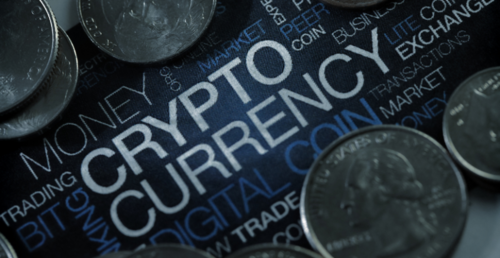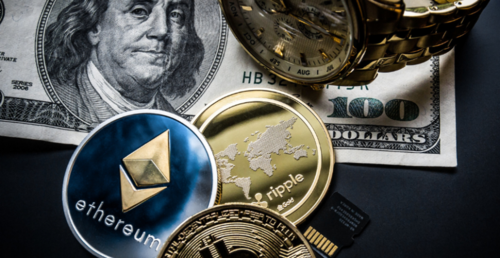
5 Places to Keep your Money other than a Savings Account

There’s merit in the trusted way of saving money in a savings account with a bank. It’s familiar, convenient and generally risk-free, but returns can be rather thin compared to other investments such as stocks or crypto. No one’s saying you should ditch the old savings account. After all, it’s working exactly as intended, but there are investments more suited to growing wealth over time.
Take for example the average interest you can earn in a savings account with a US bank. This number currently sits around 0.25%, with the highest peaking somewhere around 4-5%. On the other hand, the SP500, an index that tracks 500 of the largest listed companies in the US, has shown returns of around 10% in the last decade. Bitcoin has shown returns of around 60% this year.

Before we look at five common investment vehicles that often form part of an investment portfolio, it’s important to consider the interwoven relationship between risk and reward in investing.
Risk and reward are inseparable. Investing comes down to risk-taking and managing this risk through diversification and other investment tools and approaches.
“While investing in a diversified portfolio representative of the entire market will likely yield a greater return on your investment than a high-yield savings account over time, there is also a correlating risk with that potential gain,” Alissa Krasner Maizes, founder of Amplify My Wealth, an investment advising firm in New York, told Forbes.
In other words, high-risk investments tend to deliver higher returns, and it’s up to investors to find the balance they are comfortable with somewhere on the sliding scale.
It’s also where the case for long-term investment is made. Longer investment horizons enable you to take on more risk as your investment can ride out the ups and downs in the market.
The composition of any portfolio will be dependent on the individual investor’s risk appetite and investment goals. The below is not investment advice or a recommendation for any of these investments. You should always do your own research and/or speak to a financial professional when planning your investment approach.
.png)
Money market funds invest in short-term debt products such as treasury bills, certificates of deposit, commercial paper, and repurchase agreements, which earn interest over time.
Investing in the money market is considered a safe and reliable way to earn modest returns. These types of debt agreements provide a fixed rate of return for investors, and returns are generally higher than those found in traditional savings accounts.
While money market investments offer stability and liquidity, meaning you can sell them for cash fairly quickly, they typically deliver lower returns compared to riskier investments like stocks.
.png)
“The best investment on earth is earth,” said real estate investor Louis Glickman. The Covid-19 pandemic and related high interest rates have put pressure on property markets and tested the Glickman maxim, but property is still considered an important part of an investment portfolio.
There are a few ways to invest in property. You either buy a brick-and-mortar home and rent it out to tenants or live in the property yourself. Or you can invest in something called listed property through a public company that invests in or manages properties, or funds that invest in these types of companies.
All things being equal, finance professionals still believe property to be a relatively stable investment over a long time horizon, also serving as a hedge against inflation if you can secure a fixed-rate mortgage or rent it to tenants.
.png)
By investing in stocks, you are buying shares, or equity, in a company listed on a stock exchange. Some companies also reward investors with regular dividends for being a shareholder. There are different ways to buy company stocks, either through an exchange or various types of funds that bundle similar stocks.
The stock market has historically been one of the best-performing asset classes in traditional markets but there is a risk trade-off.
Stock prices tend to be more volatile than that of, say, gold, and your investment generally requires a long time in the market to ride out these waves. Most analysts believe this timeframe to extend over five years or more. “The longer the time frame — through highs and lows — the greater the chances of a positive outcome,” as Capital Group, one of the world’s oldest investment companies, said.
McKinsey echoes this view. “Many might be surprised to learn… that since about 1800, stocks have consistently returned an average of 6.5 to 7.0 percent per year (after inflation). Our analysis shows that market returns in the past 25 years are within that historical range.”

Gold is the original safe-haven investment for investors seeking shelter from economic instability. Jewellery and dentures aside, it can be tricky getting your hands on actual gold. The soft metal is typically sold in bars weighing anything from a few grams to 400g, and they don’t come cheap. A 10g gold bar will set you back around $700 at current prices. Then there’s also the issue of keeping it safe. You can lock it in a safety deposit box at a bank or in a safe at home. Otherwise, you can get exposure to gold through exchange-traded funds that track the price of gold in a specific currency.
The tokenisation of assets has created another avenue to invest in gold, as you can now buy tokenised gold, a digital representation of gold recorded on a blockchain. Pax Gold (PaxG) is one such token backed by physical gold.
Bitcoin has come to be seen by many as a form of digital gold, the proponents of this theory saying it’s a hedge against inflation and holds its value when markets go belly-up. The argument seemed to hold up at the beginning of the year when bitcoin rallied during the US banking crisis, but the leading crypto has a way to go before it truly fits the digital gold narrative. At other times, BTC behaves much like a risk-on asset, retracing along with stocks at the slightest mention of a rate hike.

The narrative around crypto has changed over the years and will continue to change as the industry matures.
Bitcoin started out as an alternative, more efficient type of currency built for the Internet Age, but it has evolved. Over the years it has also been established as a long-term investment, which could be because of its unprecedented growth over the years, far overshadowing that of any other asset class.
Ethereum and other networks like Avalanche continue to grow as NFT marketplaces and well-known brands like Nike and Adidas build products and experiences on the blockchains of these networks. And experts predict that the tokenisation of real-world assets will continue driving growth in these networks.
Much like stocks of different companies, each of these cryptocurrency networks have a unique investment case and risk attached to them. Many financial advisers today recommend a small allocation to crypto in an investment portfolio.
A CFA Institute Research Foundation report looked at the impact of bitcoin on a diversified portfolio between January 2014 and September 2020. “Over this period, a quarterly rebalanced 2.5% allocation to Bitcoin improved returns from a traditional portfolio by nearly 24%,” according to Forbes.
To be fair to the numbers, bitcoin saw gains of almost 3,000% during this period, but the researchers simulated different holding periods over various timeframes and still concluded that “a 2.5% allocation to bitcoin increases the returns of a diversified portfolio in 100% of three-year periods, 97% of two-year periods, and 74% of one-year periods since 2014.”
As the authors noted, “Ultimately, investors arrive at this question: What role, if any, should cryptoassets play in an institutional portfolio?” The magical number often quoted by experts lies somewhere between 1 and 5% allocation to crypto, just enough to enjoy the upside of growth but not be too exposed to the inherent volatility of a young asset class. But it all depends.
As Callie Stillman, partner at Lift Financial, explained to Forbes, “your crypto portfolio should look just like any other part of your investment portfolio. It should be diversified and match your risk tolerance.”

Buy, store, and manage your investments with confidence
To Invest in Crypto, click HERE
Join Markethive - The First Social Market Network Built on Blockchain, click HERE
A Network Built for Entrepreurs, by Entrepreneurs...
*This information should not be construed as a solicitation to trade. All opinions, news, research, analysis, prices or other information is provided as general market commentary for information purposes only and is not investment advice or recommendation. We always advises you to obtain your own independent financial advice before investing or trading in cryptocurrency.

About: Andries vanTonder
Over 40 years selfemployed
He is a Serial Entrepreneur, an Enthusiastic supporter of Blockchain Technology and a Cryptocurrency Investor
Find me at my Markethive Profile Page | My Twitter Account | My Instagram Acount | and my Facebook Profile.
